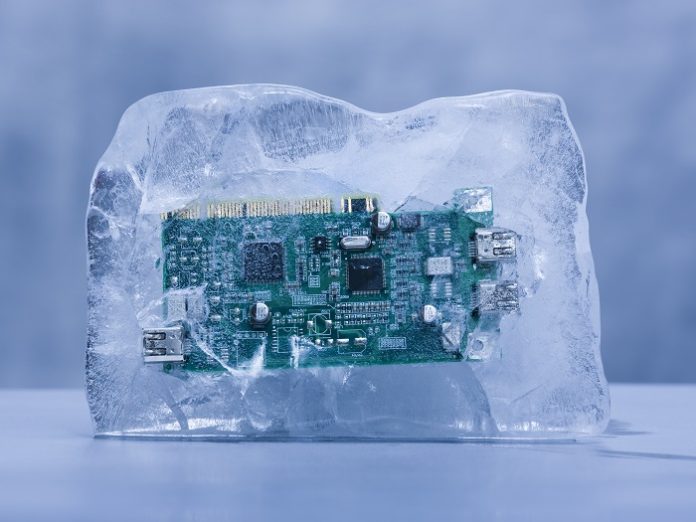Consumers are elevated towards innovation, seeking performance enhancement, reliability and better products. The evolution had metamorphosed the majority of electronic appliances into miniaturized forms. With the increased space crunch, managing the internal component in terms of thermal management has been a tough race for engineers.
It is always debated which is the best way of managing heat dissipation situations in an electronic but the question that needed much attention is why do we need cooling? The second law of Thermodynamics is the answer to this question, energy usage results in waste heat. Modern electronic equipment consists of loads of transistors and an electric control current causes transistors to switch on and off or amplify electronic signals to run programs. It means the additional current is needed to power each of these transistors which results in more heat loss. It is very evident that a heated component may lead to damage and less efficiency in terms of performance.
If we go into the basic physics of thermal management, heat loss from a body is directly proportional to the difference in temperature between the body and its surroundings, as stated by Newton’s Law of Cooling. To manage so, Thermal Interface Materials come into place for efficient heat dissipation and to prevent the devices from damage caused due to heat. While choosing the right TIM is also an act onerous as it is very productive and application-specific. Today we have simulation tools instead of traditional physical prototyping which makes setting up a coherent early-stage design easy and convenient. It is very much supportive in carrying all the thermal management precautions prior to any damages.
Wayne Eng – Global Head of Market Strategy, Data & Telecom, Henkel AG & Co. KgaA expounded on this topic further while having an exclusive conversation with Sheeba Chauhan, Sub Editor ELE Times. Excerpts:

ELE Times: ‘What governs thermal interface materials in electronics and how do they work?
When removing operational heat from components in electronics applications, heat dissipation is governed by Newton’s Law of Cooling, which states that the rate of heat loss from a body (component) is directly proportional to the difference in temperature between the body and its surroundings. In electronics, we are mostly dealing with efficiently transferring heat from a heat-generating device, such as an ASIC, to a heat-absorbing/removing element like a heat sink. If heat is not properly managed, it may adversely impact the functional performance and lifetime of the component and, therefore, the entire electronic system.
While heat sinks are necessary and effective, direct components to heat sink contact will not move heat efficiently, because air and small surface microscopic deviations introduce void interference.
The job of thermal interface materials (TIMs) is to fill these gaps (referred to as wetting out) and, via thermally conductive filler material, move heat from the component to the heat sink. TIMs have always been an important part of the electronics equation, but their necessity and capability have become more critical with the higher power density associated with today’s electronics (5G, data centres, AI, automotive, etc.).
ELE Times: What are the most widely used thermal interface materials (TIMs)?
That’s a bit of a tough question, as TIM selection is very application-specific and production-specific. How much heat do you need to dissipate? What is the top operating temperature of the device? Is this a high-volume product where automation is important? As a starting point, the tolerances between the two surfaces (a component or a PCB and its heat sink or housing) should be considered and a material that most effectively compensates for those tolerances selected. Other considerations include the thermal conductivity, base resin technology, processability, dielectric isolation and format (one-part, two-part, liquid, gel, pad, phase change, etc.), to name a few.
However, across the board and regardless of TIM type, we are seeing a significant increase in market demand. Accelerated device and component integration to manage requirements for high-performance electronic systems (such as ASIC solutions with high power densities) are driving TIM growth.
ELE Times: What challenges are emerging in thermal management with the increased use of nanotechnology in modern electronics?
Nanotechnology has the potential to change the game in modern electronics transistor structures and design, allowing for faster, smaller systems. The resulting increases in power density — which, depending on the design, can go hand in hand with nanotechnology — can lead to higher thermal conductivity requirements. In many cases, a thinner bond line material may be superior to one with very high thermal conductivity, as it solves the thermal impedance issue.
In other words, a very thin TIM bond line – like what you would find with a phase change or a grease — offers the most efficient path with the least thermal impedance. As we often say, material selection should be “as thin as possible, as thick as necessary” to optimize performance. However, a TIM is often just one piece of the solution; other more exotic cooling strategies like heat sink cooling pipes/vapour chambers, as well as active (air) cooling and liquid cooling are also part of the equation.
ELE Times: How would you describe phase change materials innovation in thermal management?
As mentioned previously, phase change materials are particularly effective for high power density applications, such as power modules, motor drives and data centre line card processors, for example, where a thin bond line and low thermal impedance are important for good thermal conductivity performance. Phase change materials offer the thin bond line benefits and thermal control of grease, but not the drawbacks.
Over time, greases tend to migrate, or ‘pump out’ of the interface at certain temperatures. Ultimately, this can lead to reduced thermal performance. Phase change materials, on the other hand, return to a solid-state at a given temperature (when the device is not in use) and the thermal capability is preserved. This is important for systems that are expected to last 10, 20, or 30 years or more in the field. Without solid thermal management, reliability is diminished.
Finally, as you referenced, innovation in phase change materials is underway. With operating temperatures for many applications now approaching 150° C and soon to reach 175° C – 200° C, advanced formulations are required. Henkel is diligently working to develop phase change TIMs that can meet these thermal cycling reliability requirements and we’ve made great progress. Stay tuned!
ELE Times: What are your recent product launches in the thermal management segment?
Thermal management innovation has been accelerated over the past several years at Henkel. Recently, we have launched micro-thermal interface (microTIM) durable coatings for pluggable optical module cooling in data centre line cards, very high thermal conductivity (10 W/m-K) one-part gels for high bandwidth applications (5G infrastructure, data centres, EV infrastructure, automation and AI), as well as several silicone-free formulations for environments with silicone volatile-sensitivity (bonding, optics, etc.). These are just a few of the many new thermal materials Henkel has commercialized in the last five years.
ELE Times: What are the expansion plans of Henkel for the year 2022?
From a thermal perspective, we are very focused on solving the challenges posed by high power density designs. Balancing resins and fillers to provide thermal formulations that deliver reliability, processability and long-term performance is where Henkel’s expertise and global resources provide significant differentiation. Innovations in high thermal liquid gap fillers, microTIM durable coatings and phase change materials are currently in the pipeline.
Find out more about Henkel’s Data & Telecom solutions by visiting their dedicated website: https://datacom-telecom.henkel-adhesives.com/
Sheeba Chauhan | Sub Editor | ELE Times & Times EV








